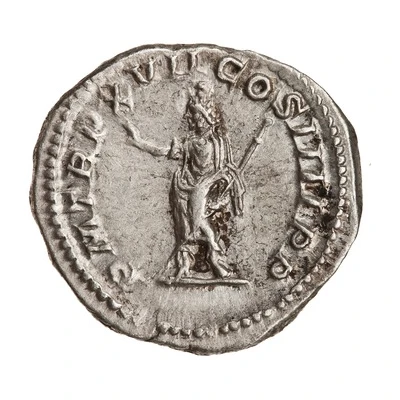


© American Numismatic Society (ANS)
Denarius - Caracalla P M TR P XVII COS IIII P P; Serapis
214 year| Silver | 3.1 g | 19.5 mm |
| Issuer | Rome › Roman Empire (27 BC - 395 AD) |
|---|---|
| Emperor | Caracalla (Marcus Aurelius Antoninus Caracalla) (198-217) |
| Type | Standard circulation coin |
| Year | 214 |
| Value | 1 Denarius |
| Currency | Denarius, Reform of Augustus (27 BC – AD 215) |
| Composition | Silver |
| Weight | 3.1 g |
| Diameter | 19.5 mm |
| Shape | Round (irregular) |
| Technique | Hammered |
| Demonetized | Yes |
| Updated | 2024-10-05 |
| Numista | N#273371 |
|---|---|
| Rarity index | 94% |
Reverse
Serapis, wearing polos on head, standing front, head left, raising right hand and holding transverse sceptre in left hand.
Script: Latin
Lettering: P M TR P XVII COS IIII P P
Translation:
Pontifex Maximus, Tribunicia Potestate Septima Decima, Consul Quartum, Pater Patriae.
High priest, holder of tribunician power for the 17th time, consul for the fourth time, father of the nation.
Comment
Mass varies: 2.669–3.54 g;Example of this type:
American Numismatic Society (ANS)
Source:
Online Coins of the Roman Empire (OCRE)
Interesting fact
One interesting fact about this coin is that it features an image of Serapis, a deity worshipped in the Roman Empire during the 2nd and 3rd centuries AD. Serapis was a syncretization of the Egyptian god Osiris and the Greek god Hades, and was often depicted with a modius, a grain measure, on his head, which symbolized his role as a god of fertility and agriculture. The inclusion of Serapis on this coin suggests that the Roman Empire was promoting the cult of Serapis as a way to unify the diverse religious beliefs of its subjects and promote imperial ideology.